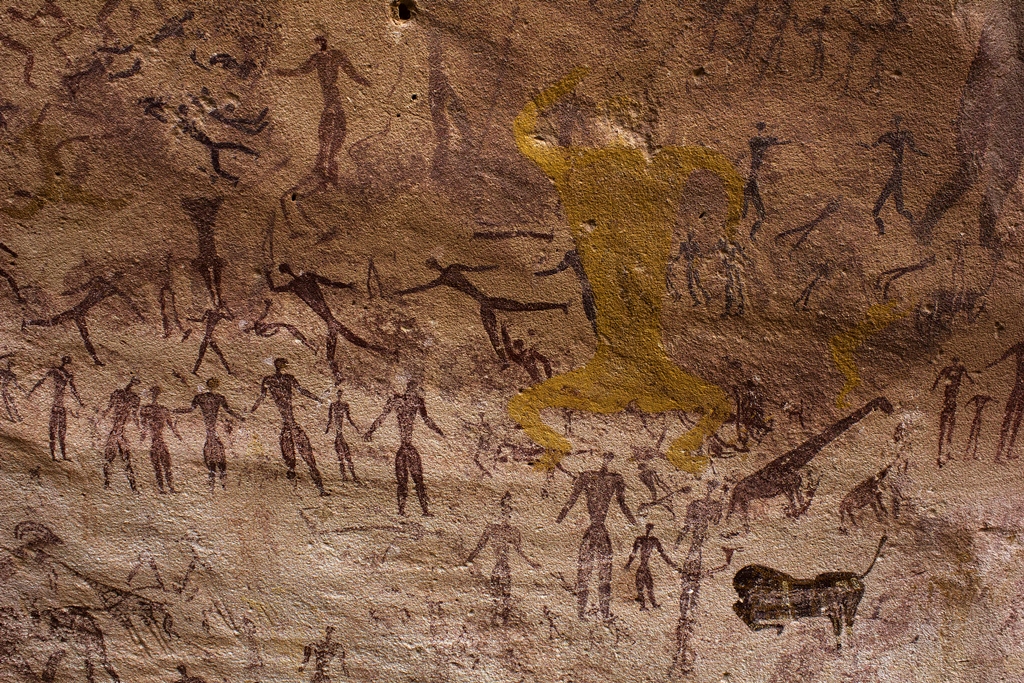In 1956, a French expedition went to the Sahara desert and they discovered ten paintings.

Judging from the drawings, it seems rudimentary and naive. The colors used are the colors of soil and different types of rocks, such as red from iron oxide, white from kaolin soil. Brown, blue or green colors are also taken from sedimentary rocks with carbon content.
They took colored stones and ground them with water as pigments to paint on the frescoes. Thanks to hydrolysis, the red colors that permeate the stone wall, long-term contact with the stone will blend together into a homogeneous form, thus keeping the fresco surface fresh and durable over time. After thousands of years, the colors are still splendid and fresh.
That is also one of many special and strange things.

In 1933, the French cavalry arrived in the Sahara desert and accidentally discovered a population of several kilometers long murals on the Taxiritai and Enachen plateaus. Many of them are large, some are up to a meter tall. After that, many European and American scientists went there one after another.
In 1956, a French expedition team went to the Sahara desert and they discovered up to ten thousand frescoes. The following year, they brought back to Paris 11,600 square meters of restored frescoes and photographs that had caused a stir in world opinion for a time.

Among the murals, there are many people who are majestic warriors, showing their majestic and invincible appearance. There are people holding long spears, round shields, sitting on chariots bravely rushing forward to show the scene of fighting. There are people holding bows and arrows, showing the hunting scene. There is another scene where many pictures of smiling girls are duplicated.
There are even people who look like they are offering, like they are welcoming an angel to earth. There are even house paintings showing the people of the Sahara living in hemispherical grass huts. Many ceramic items are also depicted in the paintings.

From the frescoes, we can know that dancing, hunting, worshiping and religious rituals were the main contents of the customs and habits of the population at that time. It is very likely that people at that time, before or after fighting, hunting, offering sacrifices and dancing, created murals to express their spirit of loving life and encouraging themselves.

Among the frescoes found, animal images are the most numerous. The animal was scared, its four hooves raised high as if flying. Then the scene scattered, very lively. The art of creation is very unique, comparable to any artistic masterpiece of any country at the same time.